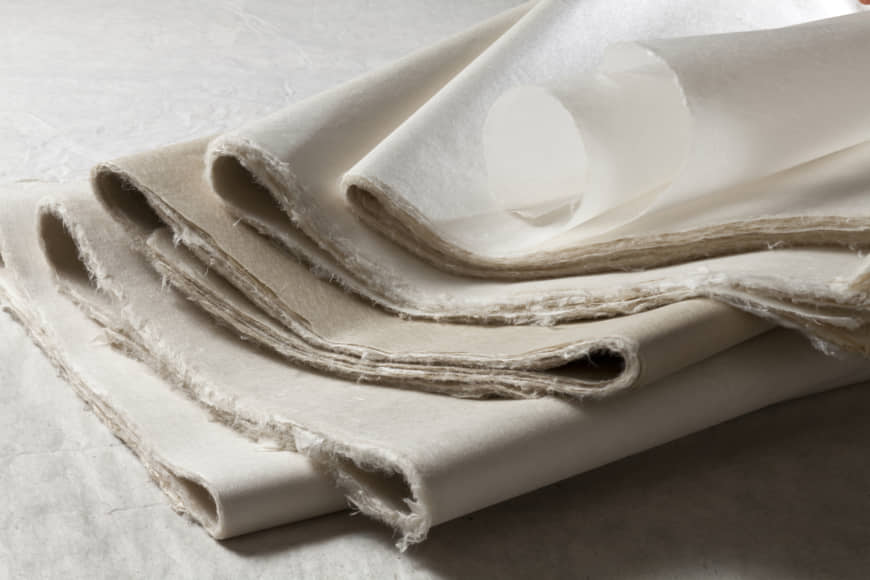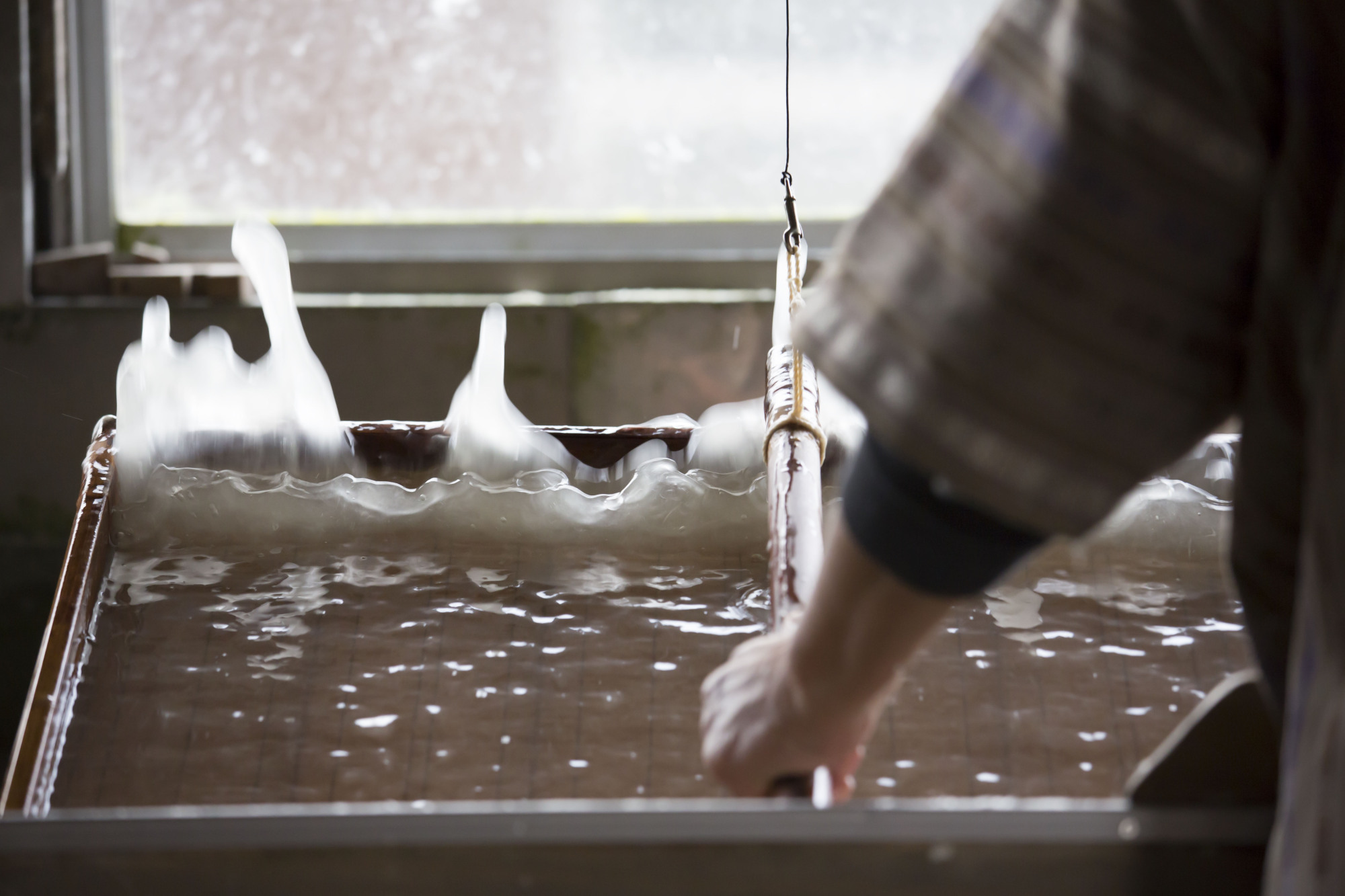Wonders of WashiDiscovering the tradition of handcrafted paperIt is thought that paper first arrived in Japan around the third century. According to the "Nihon Shoki" ("The Chronicles of Japan"), papermaking started around the fifth century and increasingly developed in a uniquely Japanese way. In the quest for paper of the highest possible quality, artisans devised new methods and experimented with different materials. An example of paper made in the year 702 is preserved in the Shosoin treasure house in Nara.
Although many centuries have passed since then, tesuki — or handmade — washi is still produced using traditional methods. Plants such as kōzo paper mulberry are grown for their choice fiber. Several astoundingly elaborate, mostly manual, processes turn the plant material into paper. Washi is used not only to cover walls and shoji screens and for calligraphy and painting. It is also used to restore cultural properties throughout the world.



















With your current subscription plan you can comment on stories. However, before writing your first comment, please create a display name in the Profile section of your subscriber account page.